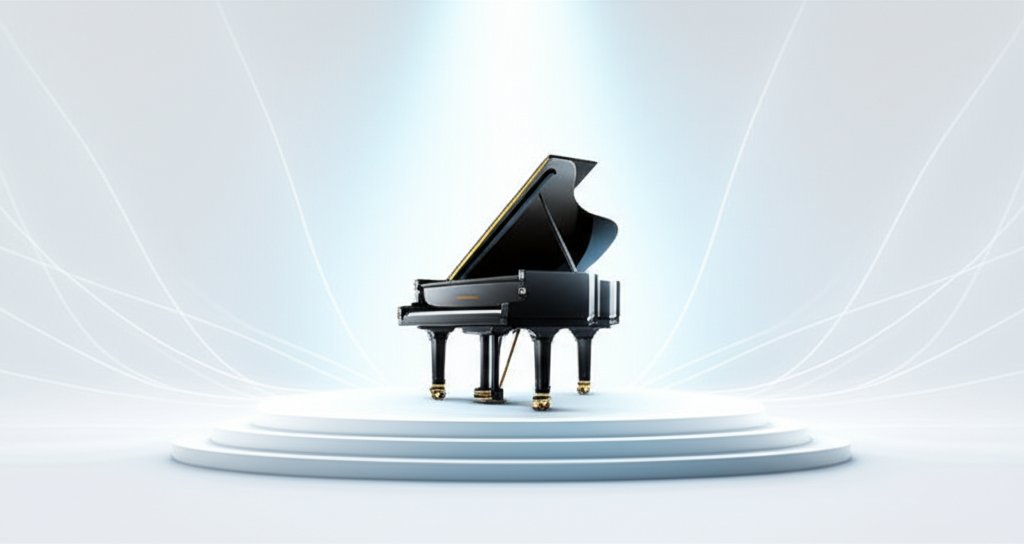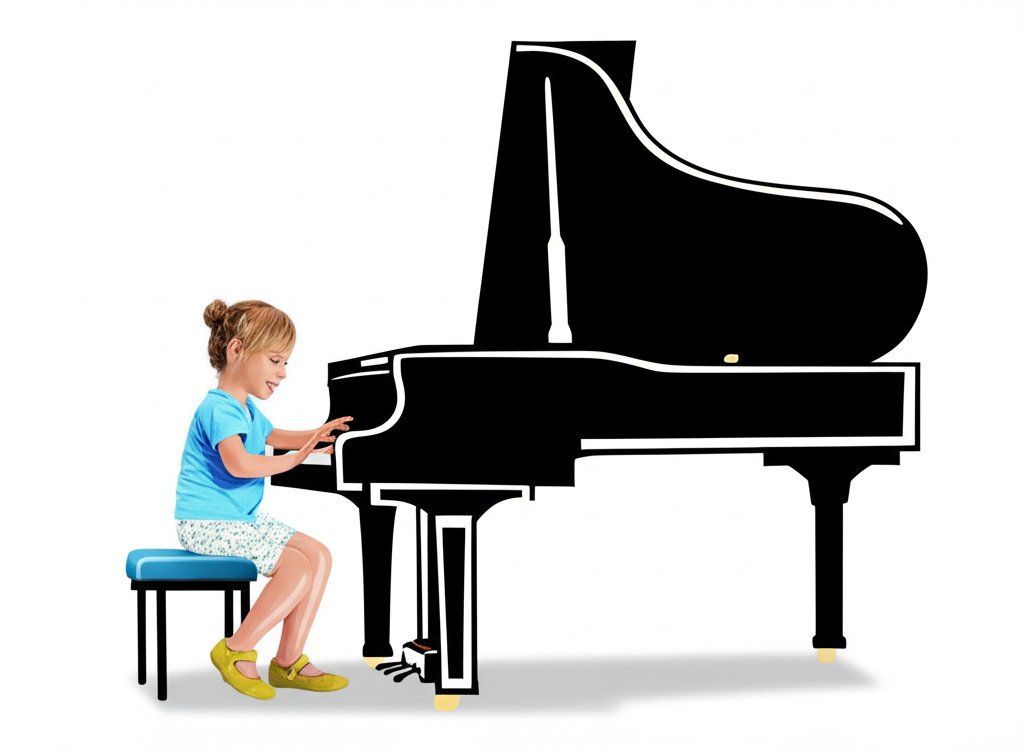The final moments of the Van Cliburn International Piano Competition are electric. After three weeks of grueling, world-class performances, a hush falls over Fort Worth’s Bass Performance Hall as the jury chair announces the name that will join one of the most exclusive lists in classical music. For the handful of pianists on stage, this is the culmination of a lifetime of work. The cliburn competition winners who emerge from this crucible don’t just receive a medal; they are handed the keys to a global concert career.
When Aristo Sham was named the Gold Medalist of the Seventeenth Cliburn in 2025, he followed in the footsteps of giants. But what truly separates the one who hoists the trophy from the other five brilliant finalists? The answer lies in a rare blend of superhuman technique, profound artistic vision, and the stamina to deliver it all under unimaginable pressure.
At a Glance: What This Article Delivers
- The Gold Medalist’s DNA: Discover the specific qualities—beyond flawless playing—that juries look for in a winner.
- A Career in a Box: Unpack the comprehensive prize package that transforms a winner into a touring artist overnight.
- The Grueling Path to the Finals: Follow the journey from over 300 applicants to the final six, revealing the immense challenge at each stage.
- Beyond First Place: Learn how special awards recognize unique talents and why even non-medalists leave with a career boost.
- Actionable Insights: Understand the Cliburn’s role as a career incubator and what to watch for in its rising stars.
More Than Just Notes: What Sets a Gold Medalist Apart
Anyone who reaches the final stage of the Cliburn is a technical wizard. Flawless octaves, lightning-fast passage work, and pristine clarity are the bare minimum—the price of entry. So, when six pianists all possess this level of mastery, how do the judges, led by figures like pianist Paul Lewis, make their decision?
The distinction lies in qualities that are much harder to quantify.
Technical Mastery Is Just the Starting Point
For a Cliburn juror, technique isn’t about speed; it’s about control and color. A finalist must demonstrate an enormous dynamic range, from a whisper-quiet pianissimo that reaches the back of the hall to a thunderous fortissimo that never sounds harsh.
They must also prove their versatility. The repertoire is designed to be a comprehensive test, demanding command over everything from the crystalline structures of Mozart to the dense, emotive power of Rachmaninoff and the intellectual rigor of a newly commissioned work. A pianist who excels in one but falters in another is unlikely to win the gold.
Artistic Voice and Compelling Narrative
This is the true differentiator. A gold medalist doesn’t just play the music; they communicate a unique and compelling interpretation of it. They tell a story with every phrase. They take risks that pay off, revealing something new in a well-known piece.
- Example: When Yunchan Lim won in 2022, his performance of Rachmaninoff’s Third Concerto was celebrated not just for its technical perfection, but for its jaw-dropping emotional depth and maturity—a quality that made the world take notice.
The winner must convince the jury they have a distinct artistic voice that deserves a global stage. This combination of technical security and profound artistry is a hallmark of the pianists you’ll find on the complete list of Meet the Van Cliburn winners.
Stamina and Consistency Across Three Weeks
The Cliburn is a marathon, not a sprint. Competitors perform four separate rounds of demanding music over three weeks.
- Preliminary Round: A 40-minute recital.
- Quarterfinal Round: Another 40-minute recital (different music).
- Semifinal Round: A 60-minute recital plus a Mozart concerto.
- Final Round: Two full concertos with the Fort Worth Symphony Orchestra, conducted by a world-class maestro like Marin Alsop.
A pianist might deliver a stunning performance in one round, but the winner is the one who maintains an incredibly high level of artistic and technical consistency through it all, battling physical fatigue and mental exhaustion.
The Cliburn “Prize Package”: A Three-Year Career Launchpad

While the $100,000 cash prize for the Gold Medalist is substantial, it’s perhaps the least significant part of the award. The Cliburn Foundation provides the winner with a comprehensive, three-year support system designed to build a sustainable international career.
| Prize Component | Description | Strategic Value |
|---|---|---|
| Cash Prize | $100,000 (Gold), $50,000 (Silver), $25,000 (Bronze) | Provides immediate financial freedom to focus exclusively on music, travel, and artistic development. |
| Career Management | 3 years of international concert bookings and management for the Gold Medalist. US management for Silver and Bronze. | This is the core engine. The Cliburn acts as the winner’s agent, securing debut opportunities at top venues globally. |
| Live Album & Studio Recording | A professional recording of competition performances is produced and released, giving the winner an immediate calling card. | Establishes an official discography and provides high-quality material for promoters and presenters. |
| Performance Attire | Custom performance wear from luxury retailer Neiman Marcus. | Ensures a professional, polished stage presence from day one, removing a small but significant stressor for the artist. |
| Publicity & Media Support | A dedicated press team to manage interviews, media appearances, and build the winner’s public profile. | Builds name recognition and crafts a public narrative, turning a competition winner into a recognized artist. |
| Think of it as a startup incubator for a concert pianist. The Cliburn doesn’t just hand over a check and say “good luck.” It provides the infrastructure, network, and guidance needed to navigate the notoriously difficult classical music industry. |
From 340 Applicants to One Gold Medal: The Cliburn Gauntlet
The journey to becoming one of the cliburn competition winners is a process of intense refinement. The 2025 competition provides a perfect case study of this demanding funnel.
- Step 1: The Application (340 entrants)
Pianists from around the world submit video recordings and an extensive application. A screening jury reviews these to select the live competitors. - Step 2: The Live Competition (30 competitors)
The chosen few travel to Fort Worth, Texas, to begin the live rounds. This is the official start of the competition on May 21. - Step 3: The Quarterfinals (18 competitors)
After the first recital round, the field is cut by nearly half. The pressure intensifies immediately. - Step 4: The Semifinals (12 competitors)
This round is a major hurdle, requiring both a solo recital and a Mozart concerto, testing different aspects of a pianist’s musicianship. - Step 5: The Finals (6 competitors)
The six finalists are chosen to perform two concertos each. These are the pianists who have proven their mettle across the board. In 2025, the six were Aristo Sham, Vitaly Starikov, Evren Ozel, Carter Johnson, Angel Stanislav Wang, and Philipp Lynov. - Step 6: The Medalists (3 winners)
From the six, the jury selects the Gold, Silver, and Bronze medalists, a decision that rests on their final concerto performances and their consistency throughout the entire competition.
Recognizing Nuance: How Special Awards Spotlight Different Talents

The Cliburn understands that greatness isn’t always captured by a gold, silver, or bronze medal. A suite of special awards honors specific achievements, often highlighting future stars and fan favorites. These awards carry their own prestige and cash prizes.
The 2025 competition featured several of these important distinctions:
- Carla and Kelly Thompson Audience Award ($2,500): Awarded to the crowd favorite, Aristo Sham. Winning both the Gold and the Audience Award shows a rare alignment between critical and popular opinion.
- Beverley Taylor Smith Award for Best Performance of a New Work ($5,000): Given to Yangrui Cai, this prize rewards a pianist’s ability to interpret and champion contemporary music.
- Best Performance of a Mozart Concerto ($5,000): Won by Bronze Medalist Evren Ozel, this award recognizes elegance, clarity, and stylistic understanding in the classical repertoire.
- Jury Discretionary Awards ($4,000 each): These awards give the jury flexibility to recognize exceptional talents who may not have reached the final stage. In 2025, these went to Mikhail Kambarov, Jonas Aumiller, and Alice Burla.
These awards ensure that more than just three pianists leave the competition with a significant accolade, providing a valuable credit for their résumés and a boost to their burgeoning careers.
Answering Your Questions About the Cliburn Winners
What happens to the silver and bronze medalists?
While the Gold Medalist receives the most comprehensive support, the Silver and Bronze medalists are also set on a strong career path. They receive substantial cash prizes ($50,000 and $25,000, respectively), US-based concert management, and a live competition album. Many silver and bronze winners, like 2017’s Georgy Tchaidze or 2013’s Beatrice Rana, have gone on to build major international careers.
Are Cliburn competition winners always the most famous pianists later on?
A Cliburn gold medal is a powerful launchpad, but it’s not a lifetime guarantee of stardom. The trajectory of a career depends on continued artistic growth, smart repertoire choices, and resilience. Some winners, like Radu Lupu (1966), become legends. Others build solid, respected careers outside the brightest spotlights. The Cliburn provides the opportunity; what the artist does with it over the next 20 years is up to them.
How much does a jury’s personal taste influence the outcome?
Juries are composed of world-renowned performers, teachers, and conductors with diverse perspectives. While subjectivity is inherent in any artistic judgment, jurors are guided by a search for consensus on core principles: technical command, structural integrity of the performance, depth of musical understanding, and communicative power. The presence of a non-voting jury chair helps facilitate discussion and ensure a fair, thorough process.
Is the final decision based only on the concerto performances?
No. The jury considers the competitor’s entire body of work throughout the three-week competition. The final round with orchestra is heavily weighted, as it demonstrates how a pianist collaborates and performs under the intense pressure of a large-scale work. However, a spectacular concerto performance cannot erase a lackluster semifinal recital. Consistency is key.
Identifying the Next Generation of Piano Royalty
The Van Cliburn International Piano Competition is far more than a contest; it’s a meticulously designed institution for identifying, nurturing, and launching the next wave of great concert artists. It seeks pianists who possess not only the fingers to play anything but also the mind and heart to say something meaningful with the music.
By following the careers of new cliburn competition winners like Aristo Sham and finalists like Vitaly Starikov and Evren Ozel, you are watching the future of classical piano unfold. They are the artists who will be shaping the sound of concert halls for decades to come, their journey from the crucible of Fort Worth to the world stage a testament to their extraordinary talent and the enduring power of this legendary competition.
- Major Classical Music Competitions Identify Talent Across The Globe - November 10, 2025
- Cliburn Competition Winners Showcase Pianos Next Generation of Stars - November 9, 2025
- Van Cliburn Competition Winners Crowned Pianos Foremost Artists - November 8, 2025










